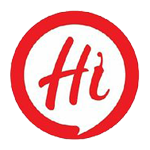To some, it may seem like once a qualified job seeker is recruited and offered a position with a company, the hard work is over. However, in reality, the opposite is true.
Providing new hires with a comprehensive onboarding experience is essential––for both employee and employer. Introducing and integrating new staff into your organization is no small feat; after all, they are brand new to your business operation and, specifically, your company’s work culture. A seamless transition that inspires them and gives them the tools and knowledge to become productive members of the team is the ultimate goal of an effective onboarding process.
In this article, we’ll provide a comprehensive checklist of all the steps required for companies and businesses looking to onboard new hires quickly and seamlessly.
Understanding the Importance of Employee Onboarding
One of the most critical pieces of information that business owners or HR professionals can follow is an employee onboarding checklist. It sets the stage for new talent coming aboard, and its contents help give these workers a greater sense of what your company stands for, and how day-to-day operations are most effectively executed.
The employee onboarding process at any company typically takes about 90 days from start to finish––if done correctly, the employee retention rate will remain high. Even after many rounds of sourcing, prospecting, and interviewing (both in-person and over the phone), there is still significant work to be done if and when a candidate has been offered and accepted a position.
In fact, the hardest work is, arguably, during the onboarding process––and the efficacy of this process depends entirely on the hiring team putting it together. This is why having an effective checklist is key.
What Should be Included in an Employee Onboarding Checklist?
For employers looking to establish or revise their process, we’ve put together a simplified, yet comprehensive 3-month onboarding plan checklist that you can use to effectively implement and use for follow-up. However you wish to action your employee onboarding checklist, make sure that you are at least following as many of the points listed below:
> Start with a congratulatory letter of offer
The first step of an effective employee onboarding experience is to offer them a congratulatory letter of offer. This not only communicates to them the value of their soon-to-be contributions to your team, but it establishes their worth as an employee. Following the usual elements that precede an offer letter (i.e. a criminal background check, reference follow-ups, drug testing), a new hire should be welcomed officially in person, over the phone, but especially in writing.
For HR members, once a congratulatory offer letter has been accepted and returned, it is at this stage that the advertised position should be removed from the company’s website and all corresponding social media and job bank channels.
> Have all relevant departments set up their accounts and programs
We all know how challenging it can be to get physically set up at a new job––the IT department is one of the most relied-upon areas of the company, so giving them as much notice as possible about an impending new hire’s start day is key.
First of all, ensure that the new hire has an email account before their first day. This ensures that they are never kept out of the loop about internal operations and that they can be in receipt of important administrative emails at all times. As early as possible, HR members should coordinate with IT, individual management teams, and especially the accounting department––new hires need to be set up with an employee number and an accounts payable profile so that there are no paycheck delays in their first two weeks of employment (otherwise, this can leave them feeling undervalued and insulted).
> Confirm and secure all their necessary tools and devices
In addition to all of the technical programming and account access they’ll need on day one, new hires should receive any business tools and devices that are meant to help them do their job right. Depending on what the company does, and how relevant it is to their jobs, these types of devices can include cellular phones, a work laptop, a mouse, headphones––everything they need. Not having ready access to these tools can make employees feel dejected, but it can also give them a sense that your business is disorganized, which is never something a new hire should be thinking about on their first day.
> Reach out with a welcoming email
This should be a completely separate email from the offer letter. A welcome email should be less formal and more personable––and it should include all of the relevant information a new hire will need before they start their first day in the office. In this note, be sure to include details about parking, building access, security, company dress code, and a complete rundown of where they should go, which elevator to take, which floor to get off on…everything they’ll need to get to their new desk. This allows new hires to arrive confident and fully prepared for to start their first day.
> Prepare their paperwork
You expect your new hires to show up on their first day fully prepared, so the same expectation should be in place for your company. On their starting date, have all relevant paperwork available to share with your employee––everything and anything that requires their signature, so that there are no delays in processing.
Be sure to include all information regarding pay, tax documents, health benefits, stock contributions, and other important topics. And also, provide your new hire with an administrative point-person that they can directly reach out to for any follow-up questions.
> Set up their dedicated desk or workspace
Even if you don’t anticipate that they will have much work to do on their first day, new hires deserve to have a workspace cubicle, office, or dedicated desk assigned to them before their first day. Again, it comes down to making your employees feel valued––and having them sit in a corner, or worse––nowhere to sit at all––can really set a bad precedence.
You’ve got the time before they start: make setting up their workspace a major priority. Then, make sure that it is stocked with relevant tools and stationery items, a working telephone, and even some company-themed accessories to really let them know that they are an important member of the work family.
> Confirm their start time Human Resources
Once you have confirmation that your new employee has accepted the job offer, it’s a matter of arranging their start date and time with HR––depending on how much notice they need to give to their previous employer, or of any existing vacation plans they may have, these details are usually finalized during the interview stage.
Have your HR contact confirm their start date and time so that additional administrative measures can be put into place (more on that later…)
> Confirm their attendance at orientation
If your business holds dedicated orientation meetings for new hires, it is a great opportunity to coordinate the new employee’s start date with said meeting. While not always possible, having them begin orientation on their first day/week puts your new hire immediately into work mode rather than having them start on a date when nobody is available to show them the ropes. Nothing is less inspiring for a new employee than sitting at their new desk on their first day with nothing to do.
Orientation meetings provide new hires with all the information they need to learn about the company’s departments (outside of their own), review their administrative paperwork, understand workplace organization charts, and, most importantly, office culture.
> Provide a copy of the company guidelines and/or employee handbook
This step usually takes place during orientation, but if your company does not include a dedicated onboarding meeting, sharing documentation of business guidelines and policies should be happening before new hires are tasked with anything work-related. There will likely be ample downtime during the employee’s first week or two, so any opportunity to give them relevant handbook-type information about the company is key.
> Take them on a tour of the office
This may seem like a no-brainer, but given how busy some offices can be, it can be easy to overlook. New employees will need to know the location of crucial business features (like fax machines and copier rooms), not to mention restrooms, kitchens, and other amenities. Don’t let them wander aimlessly on their own looking for direction––set up a quick tour of the floorplan and provide as much detail as possible.
> Assign them a work mentor
Your business is busy––that’s a given. But for a new hire who has just started, there really is no better introductory stage quite like pairing them with a work mentor, someone (preferably a senior-level employee or supervisor working within their department) who can inspire and motivate while also sharing the ins and outs of the business, the industry, and the office.
If your office has a formal mentorship program, this is a great way for new hires to start. But even in an unofficial capacity, work mentors provide the type of engaging and insightful onboarding that handbooks and meetings just can’t.
> Tell the rest of the office about their arrival
Once your new employee’s start date has been confirmed, it is important to send an internal memo to all members of the team about their impending arrival. Better yet, if you have any workshops or town halls that coincide with the new hire’s start day, this is a perfect opportunity to bring awareness to as many people as possible––even if those in attendance work in other departments, it’s always smart to make new people feel welcomed before they even start.
When announcing the in-person arrival of the team’s new hire, include their position and what their day-to-day work duties will entail. Try to also include an icebreaker introduction, featuring some fun facts, personal interests, hobbies, and so on. This type of welcoming tends to encourage current employees to reach out to the newcomer.
> Assign them work expectations
It’s never too early to bring new hires fully into the fold by describing the day-to-day responsibilities––plus, what they can be expected to bring to the table. It should never be considered aggressive or premature to set job expectations for new employees on their first day. On the contrary, motivated self-starters will be eager to have prospects in place so that they can set their own standards for performance and delivery.
> Request feedback and regularly follow up to touch base
Whether you yourself or a member of your HR team is available, routine follow-ups with new hires should always be front of mind. Not only does this final stage of onboarding give new employees a sense of value and appreciation, but it is also another opportunity to collect feedback and determine if they are adapting to the work environment and grasping the nuances and expectations of their role.
It may be easier said than done to hold individual post-orientation meetings with all new hires during the last stages of their onboarding, but it is an absolutely essential benchmark, so you should always carve out a dedicated window in your schedules to have it done. Ask as many follow-up questions as possible and, of course, give new hires an opportunity to fill you in on their progress.
There you have it! A comprehensive checklist of the most important steps necessary for effectively onboarding new employees to your business. With these points followed, you can be assured that the new hires in your organization are not only inspired to become more productive work-family members but also that you are setting the groundwork in place for long-term employee retention that keeps all parties happy.






















